Going to a range costs money, and it takes time. The next best training exercise is dry-fire training, and while it is all well and good you snap the trigger a few hundred times, how do you know if you are creating good muscle memory or creating a bad habit? You can buy a laser cartridge and snap at a target in the privacy of your home, but that does not provide feedback on whether you hit the target or not. Laser training systems are not a substitute for hands-on instruction, but it is a step up from traditional dry-firing exercises. All the systems help you to see your hits, and some keep track of your training data.
We looked at three dry-fire laser training systems from Strikeman, LaserHIT, and Mantis. Nearly all of us carry a smart phone, and that makes training convenient because all three of these laser-training systems require an app to be downloaded to your phone. Your phone then becomes an integral part to your training. You need an iPhone 6 or newer or a device with iOS 9.0 or newer to use the systems. All of these systems can be purchased online.
How We Tested
We tested using a number of criteria, including how easy the laser-training systems are to setup; what type of training scenarios do they offer; can they be used with pistols, rifles and shotguns; what is the cost and value of the system; and how do they track training progress.
We used a Canik Mete SFT striker-fire pistol with a double-action only trigger, a Beretta 92X Performance with a double-action-to-single-action trigger, and a Springfield Armory 1911 DS Prodigy with a single-action-only trigger. These pistols all are chambered in 9mm. The systems were set up both in a garage with a lot of natural light and in a more dimly lit interior room.
There are two characteristics with these trainers that do not replicate live fire. The first is the lack of recoil, and the second is you need to break your grip to rack the slide and reset the weapon’s trigger, unless you are using a DA/SA trigger, which you can continuously press in DA mode. Definitely not deal breakers, but quite different from training on the square range with live ammo. On the plus side, you can practice in the privacy of your home at any time, and no hearing or eye protection is required.
We used the systems from a low ready position — both hands on the gun and pointing down. Other shooting techniques were also employed, such as one-hand shooting and weak-hand shooting. We simulated shooting from a sitting position, as if we were just shoved to ground. Some systems have practice modes that allow drawing from concealment, which most public ranges forbid.
Remember, when dry-fire training in your home, be sure your weapon is unloaded and keep ammunition in another room and away from your training area. Also, never point a laser at someone because training lasers can damage the human eye.
The bottom line is we found all of these system helpful. System costs ranged from $100 to $200, and some systems, like the Mantis and LaserHIT, require even more investment for advanced training modes and specialty targets. The Strikeman is the low-cost option with limited training modes, but good data tracking. The LaserHIT offers more training mode options, but advanced training modes need to be purchased separately and there is no data tracking. The Mantis system offers plenty of bang for your buck. It has plenty of training modes to choose from and stores your data to chart your progress. Here are the details.
LaserHIT Dry Fire Training Kit Wireless-X Plus, $199
LaserHIT offers a number of systems. The Dry Fire Training Kit Wireless-X Plus is the top-of-the-line system. When ordering online, you choose the caliber of the laser insert, whether you want a generic laser or high-definition laser, and the type of targets, either premium paper or heavy duty. We opted for the 9mm HD laser cartridge and heavy-duty targets. The HD laser has a smaller laser dot than generic laser cartridges, plus the HD model has a longer battery life; up to 100,000 hits, or three years. The heavy-duty targets are laminated, so they stand up well when repeatedly taping them to the wall. We used blue painter’s tape to attach targets to the wall.
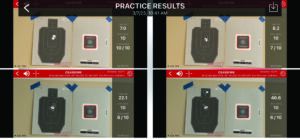
In the nice LaserHIT zippered case is another zippered case that can hold multiple laser cartridges, the HD 9mm cartridge, a 58-inch-tall tripod with a free-rotation head that holds the smart phone, a wood dowel to tap out the laser cartridge, the Wireless-X adapter that allows you to use a TV to watch your results on a big screen, and eight two-sided targets with different target shapes, such as traditional bullseye and silhouette, and sizes.
You need to download the LaserHIT app to your phone to get started. The app provides step-by-step instructions, which were easy to follow. The system includes the Wireless-X adapter, which is plugged into your TV.
First step is to tape a target up and Reload Mark target. The Reload Mark target allows you to reset the session by hitting the Reload Mark with the laser, without having to walk back and forth to the phone. Next step is to attach the phone to the tripod and position the phone’s camera toward the target. The app accesses the camera, so make sure you give the app permission to access your phone’s camera. We found we could also use our own targets, like a full-size IDPA silhouette, as long as the target is not pure white. The target must be darker than the background. The app uses the phone’s camera to recognize the target and the Reload Mark. You can then choose between two practice modes, a basic Free Target Practice or Black Steel Practice, which come when you download the app.
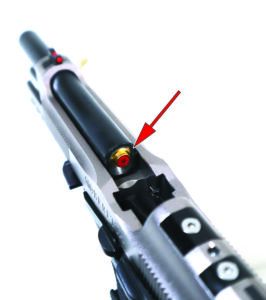
There is also a Top Score Practice and Quick Hit Practice. The Top Score mode allows you to practice up to 100 yards with sub-quarter MOA precision, making it useful for those wanting to practice with a rifle. The Quick Hit mode provides a random time delay so you can practice your draw. We thought that these two additional practice modes where well suited for the advanced shooter; however, you need to pay another $10 each for the modes. That did not make us happy because of the initial cost.
The Free Target Practice is for basic training for sight alignment, breath control, trigger press, and follow through. You can also use smaller targets to simulate longer firing distances. There is a feature that enables the app to zero hits when using a rifle with a red dot or scope. The app compensates for the scope’s mechanical offset so your hits are true. You do not need to adjust the scope in any way, the app does it all. You can also use scaled targets and the app to simulate longer aiming distances. The app records shots and, with capture, total time, hits, overlapped hits, and group measurement. After the string, the app audibly reports the data. You can change the robotic voices as well as created specific messages when you reach a set goal, so if your group is under 0.5 inches, you can customize the app to say: “You crushed it” or “John Wick better be careful.” There is an advanced feature with the Free Target practice that allows you to set up long-range conditions for you can practice with a firing distance up to 1 mile. The app can also work as a spotter and spot hit placements.
The Black Steel Practice provides audible hit feedback, with sounds like a bullet hitting steel. You can practice hitting targets of different sizes. The app will show the total number of targets, the number of target hits, and the number of total hits.
When you start, the app will beep and a countdown begins, then it flashes Commence Firing. Depending on the practice mode you are using, you have so many shots to shoot or a time limit. When you have fired the set number of shots or the set elapsed time has passed, the app announces cease fire and provides visual and audible feedback. You can then save an image of your targets to your camera’s library.
What we like about LaserHIT is that any rifle, shotgun, or handgun can be used as long as you have the correct-caliber laser cartridge inserted into the gun. The smaller-scale targets are a nice feature because they allow you to shoot an array of targets near and far.
In use, the app provides instant feed back, with realistic-looking bullet holes on the target via the phone or TV screen. Hits are also audible with different sounds for a hit or a miss.
Our Team Said: We liked that the LaserHIT system can be used with multiple guns just by purchasing the correct laser cartridge. We felt the feed back was good since the app tracked our data, similar to looking at your target on a live-fire range. We would have liked the app to store the tabulated data so the next time we practiced, we could compare results and see progress. What annoyed us was needing to purchase the additional practice modes. We feel the initial cost was high enough that those additional practice modes should have been included.
GUN TEST GRADE: B+
Strikeman Laser Firearm Training System, $100
The Strikeman comes in a cardboard box along with a short tripod to hold your smart phone, a bullseye target in a plastic stand, and suction cups to mount to a smooth flat surface, and a laser cartridge with three batteries. You can train with rifles, handguns and shotguns if you have the correct-caliber laser cartridge.
The first step is to download the free app to your phone and give the app permission to use your phone’s camera. Assemble the target stand and place the target on a table with your smart phone attached to the tripod in front of the target between 2 to 5 feet. You can set it up on the floor, but your target will be low. We’d prefer the bottom edge of the target be at least 3 feet off the floor.
Open the app and tap the Train icon at the bottom to the screen. This is the screen where you type in the shooter distance from the target, day or night conditions, select a session type either by number of shots or time, enable or disable multiple sessions by telling the app the number of sessions and the time between sessions. The next step in the process is to calibrate the app to the target by using your fingers to pinch or expand the red circle on the phone screen to match the outer circle of the bullseye target in the stand.
The system uses your smart phone’s camera to view a target and captures the laser hits on the target. Hits are captured on the target with a gunshot sound on the phone screen. You can use a voice active feature that allows you to repeat a session by simply speaking “Repeat.” The microphone in the phone picks up your voice and starts the countdown for the next session. You can also walk back to the phone and tap the Repeat Session button. The app gives you 20 seconds to get ready. All the data is saved to the Cloud from your phone. The Metrics tab shows practice history with your shot-accuracy improvements over time, your average shot-score distribution, and other metrics.
As the laser hits the target, a gunshot sound is made, a hole appears on the phone screen, and the audio indicates if it is a hit. If you hit outside of the 10 ring, the audio indicates what ring you hit. It will also capture misses on the target. You can track your progress by saving the target image to your phone, or you can share it. The app also saves your data and helps you chart your progress.
We discovered that due to the height of the target stand and tripod, the Strikeman is best suited for use on a table or counter top. We used a mechanic’s tool chest when testing in the garage and a table inside an interior room.
Our Team Said: We liked that this system saves shot data and helps you chart your progress. The simple bullseye target can become repetitive. We would have liked more variety in targets. The voiced-activated session-repeat function works well and does not require you to walk up to the phone between each session. The need for a table or counter to place the system on limits the way you can use the Strikeman.
GUN TEST GRADE: B+
MantisX Mantis Laser Academy, $150
The Mantis Laser Academy comes in a cardboard box holding 12 different targets, a laser cartridge, large tripod, wood dowel to remove the laser cartridge from the pistol barrel, five target stands, sticky tacks to temporarily stick the targets to a wall, and a small zipper case that holds multiple laser cartridges, the dowel, and an additional small tripod. The small tripod is used when setting up the system on a table top.
The set up requires you to download the Mantis Laser Academy app to start. We preferred the taller tripod because it allows you to place the target chest high on a wall or door. You can set up multiple targets at once and a Start/Stop target, which you hit with a laser shot to start a session or end a session. Next step is to open the app on your phone and tap the Training tab at the bottom of the screen. A list of drills will appear. You find some drills are marked PRO, and some of these require a specific target, which must be purchased separately. We found that the drills we could access provided enough variety so we didn’t get bored with the same target and same drill.
Once you choose the drill, the app accesses the camera to recognize multiple targets at once. The app outlines the target in blue to indicate the app is calibrated to the target.
Mantis provides the standard bullseye-type drills, plus others like Shot From Guard/Low Ready — Multi-Shot, which has the shooter start from a prompt. This drill measures your reaction time and tracks the accuracy of shots. Another is Compressed Surprise Break drill, which helps develop a fast shot in response to the start signal. There are holster drills and duel drills where you can compete against an opponent. We liked how the benefits of the drill was explained by just tapping an info icon. The wide variety of different drills is the real value with the Mantis.
In addition to drills there are courses. The Pistol Marksman Course is designed to help shooters develop pistol shooting skills. Different targets are used, number of shots vary and there is a minimum score. Even a seasoned shooter will find some of these drills challenging.
Our Team Said: The Mantis Laser Academy offers good data collection and a large selection of drills and courses at a reasonable price. We liked the assortment of targets, the target stand, and the tripods, which in our opinion makes the Mantis versatile and easy to use in most environments. This is the system we would purchase due to the variety of drills and data collection.





























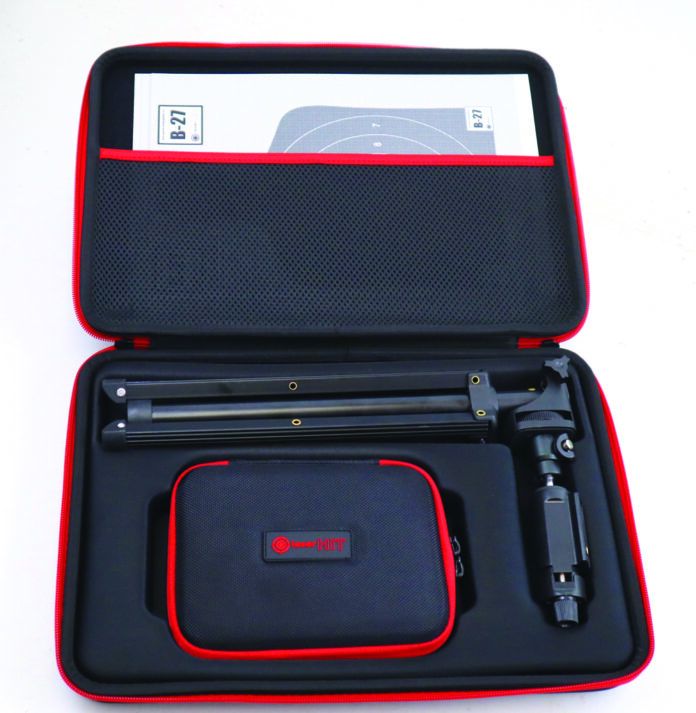
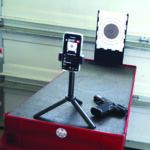
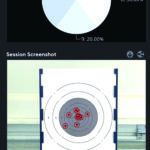
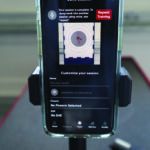
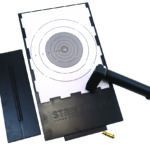
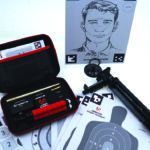
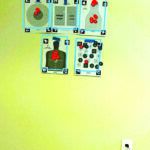
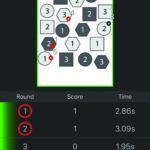
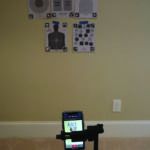


You left off the Mantis Grade 🙂 Or did you grade them all the same, so you didn’t piss off any potential sponsor? 🙂